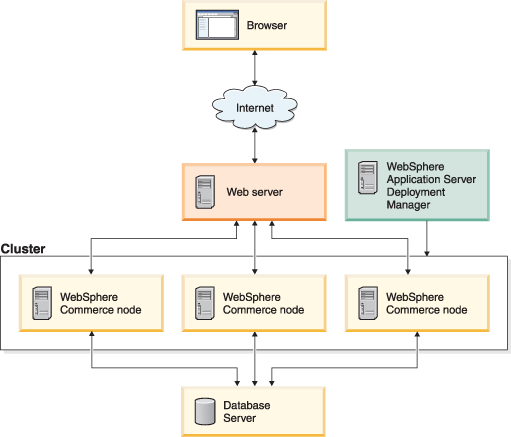

WebSphere Application Server Network Deployment clustering mechanism
WebSphere Commerce configures a WebSphere Application Server stand-alone profile for each WebSphere Commerce instance that is created. To cluster WebSphere Commerce machines you must create a WebSphere Application Server deployment manager profile. If you install WebSphere Application Server Network Deployment on the same node as WebSphere Commerce, your hardware requirements will be greater than if the node only runs WebSphere Commerce.
Important: When creating a clustered environment, ensure that the original node remains
active. WebSphere Commerce relies on the WebSphere Application Server profile on the original node
for maintenance tasks such as applying fixes.
This topic covers the following types of clustering for WebSphere Commerce:
For more information about clustering, see Clusters and workload management.
The following diagram shows an example of a WebSphere Commerce cluster:
